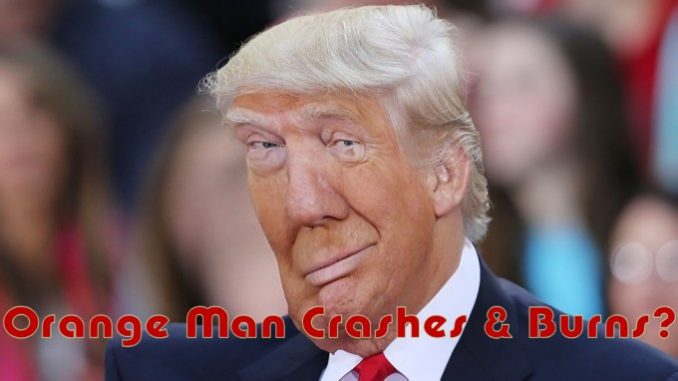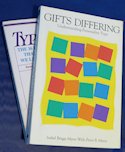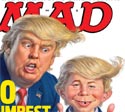
- About the MBTI
- Verify Your MBTI Type
- Personality Patterns
- MBTI Articles & Resources
- Article Directory for Educators & Students
- Books on Personality Types
- Emotional Intelligence & Personality Type
- Career Planning & MBTI
- MBTI Business Applications
- Lenore Thomson - Carl Jung Personality Type
- Site Map - Master Directory of All Articles
- MBTI Consultant Links
- Personality Type Workshops & Conferences
- Links to Other Type Websites
- Murder Mystery Business Theatre
- About Us
Differing Mental Patterns of the 16 Personality Types
The Hidden Letters in the Myers-Briggs MBTI ® Type - Part 2
Are Feeling Types deficient in Thinking skills?
Do Thinking Types lack Feeling?
Are Introverts unable to Extravert effectively?
One of the too frequent (and inaccurate) criticisms of the MBTI and the Myers-Briggs Type Indicator is that it presents people in an either or fashion. You are either Introverted or Extraverted, a Thinker or a Feeler, etc. Your four type letters, type cast you.
But these four letters are only indicating your "preferences" just like we say a right-handed preference person iis a "righty." This doesn't mean the person lacks or even devalues his or her left hand. The four letters only signify a dominance of which end of four important mental process or perspective dichotomies a person favors. In some cases this favoring my be quite close 53/47 for example; in others the reliance may be more clear cut.
I developed a graphic I call Type Faces to help dispell the stereotype that novice users (and criticizers) of type make - that the four letters of your type exclude the other four letters. While the patterns of personality differ, all types possess E, I, S, N, T, F, J and P.
|
In the following diagrams of the Patterns of the 16 Myers Briggs Personality Types, the mental function that is opposite in all respects to one's dominant mental function is illustrated in red, in italics, and in the smallest font size. It typically is expressed unconsciously, hidden to one's self and in the case of extraverts hidden to others. In the language of Jungian type theory, this is called the "inferior function." Being hidden, however, doesn't mean it has no influence. In fact it can be the gateway to an entirely opposite personality called the shadow, an evil twin that may come out under situations of extreme stress. Or it can emerge in a more positive way as a person matures and begins employing their hidden functions in a more active manner, adding new dimensions to their nature.
The third mental function is illustrated in red and a smaller font to illustrate a lesser influence and its less conscious nature. It too plays a role in personality operating in a supportive fashion to a person's dominant function. For example, it helps explain why an ENTJ friend holds to the maxim that "the devil is in the details" (outer world face is T and S) and an ESTJ friend considers himself a "big picture guy" (outer world face is T and N).
The type face pattern diagrams illustrate three important points.
- All types have all four mental preferences as part of their personality pattern, not just the two represented by the two middle letters of their type code.
- All types have both an E (extravert) and I (introvert) nature, and a J (judging) and P (perceiving) nature even though the letters of the MBTI personality type code show only two.
- The four MBTI ® type letters are a short-hand code for a much more complex pattern of personality that incorporates E & I, S & N, T & F, and J & P. The diagrams, I hope, make more evident that the 16 Types represent 16 different kinds of minds, each with a unique pattern or mental framework.
Introverted Personality Types


ISFP and INFP - Introverted Feeling Types


ISTP and INTP - Introverted Thinking Types


INFJ and INTJ - Introverted Intuitive Types


ISFJ and ISTJ - Introverted Sensing Types
![]()
Extraverted Personality Types


ESFP and ESTP - Extraverted Sensing Types


ENFP and ENTP - Extraverted Intuitive Types


ESTJ and ENTJ - Extraverted Thinking Types


ESFJ and ENFJ - Extraverted Feeling Types
![]()
In looking at the above diagrams one can see that some personality patterns show a mental preference as extraverted while others show it as introverted. See ESFJ vs ISFP for example; their patterns are the flip-flop of one another. In fact hidden within every ESFJ personality is an unconscious ISFP and visa-versa. This is true of every type; there is secondary pattern, a twin who is the mirror image of the primary pattern. This mirror image is a type's shadow function, aspects of the self that are buried in the unconscious mind.
Educators and practitioners of Myers-Briggs Personality Type have expanded the original 4 mental preferences (S, N, T, and F) into 8 by considering whether the preferences is used in an extraverted fashion or an introverted fashion. Roger Pearman (2011) considers these as eight resources that are available to every person. Each type typically has a greater degree of comfort in using two to four of these resources, but the remainder can be seen as untapped, waiting to be developed.
You can learn more about these 8 resources or mental functions in an article I've written elsewhere in PersonalityPathways . . . how to recognize them in yourself and perhaps develop them as well as recognizing and understanding them as others may use them. See Descriptions of the Jung-Myers-Briggs Mental Functions.
![]() Bibliography
Bibliography
Pearman, Roger (2011) Personality Type: Adding Value to Learning and Growing for Personal Effectiveness. Bulletin of Psychological Type, 34(1), 21 -22.
![]() Learn more about interpretting the Myers-Briggs Personality Type Code
Learn more about interpretting the Myers-Briggs Personality Type Code
![]() Learn more about the Type Faces and the Dynamics of Type
Learn more about the Type Faces and the Dynamics of Type
![]() Learn more about The Myers-Briggs Personality Test *
Learn more about The Myers-Briggs Personality Test *
![]() Book Review: "The Parasitic Mind: How Infectious Ideas are Killing Common Sense" - The Civil War between Feeling and Thinking?
Book Review: "The Parasitic Mind: How Infectious Ideas are Killing Common Sense" - The Civil War between Feeling and Thinking?
Other Popular or New Articles on Personality Type
![]() Mobile Friendly Version of our Free Personality Type Test
Mobile Friendly Version of our Free Personality Type Test
The Civil War between Feeling and Thinking

Trump - The Mouth that Roared Once Too Often?

® MBTI, Myers-Briggs, Meyers Briggs, and Myers-Briggs Type Indicator are registered trademarks or trademarks of the Myers-Briggs Type Indicator Trust in the United States and other countries (aka meyers briggs or myers briggs).
*While commonly called a "test" the MBTI ® is not a test but a personality inventory in which there are no right or wrong answers.
Return to MBTI & Myers Briggs Personality Types Home Page
© Published by Ross Reinhold & Reinhold Development 1997 - 2023
Privacy Policy About Us



